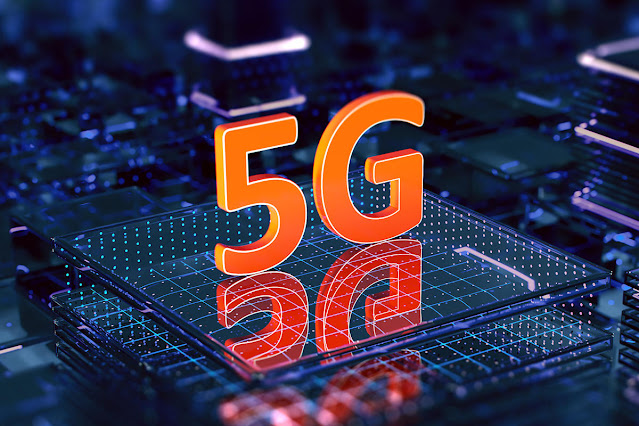Meaning of Virtualized 5G RAN (vRAN)
Network Virtualization or ( Virtualized 5G Network ) simply means the migration from hardware-centric custom-built network nodes to more sophisticated networks that are implemented in software which then runs on a generic hardware computing platform
Implementation of a virtualized 5G network began with a massive surge in data consumption and fueled by the implementation of cloud-based solutions for data storage facilities instead of traditional hardware storage facilities.
India is also focusing on developing its own virtualized 5G network instead of relying on Chinese companies.
What is 5G virtualized core network?
In virtualized 5G networks, a higher-layer split is divided into a well-defined interface (F1) between two logical units: the Centralized Unit (CU) and the Distributed Unit (DU).
The CU has less stringent processing requirements and is more amenable to virtualization than the DU and its functions that are closer to the radio.
In full-stack 5G vRAN virtualization, the DU is connected to the radio via a packet interface known as enhanced Common Public Radio Interface (eCPRI).
Virtualized 5G RAN Architecture
Current 5G RAN architecture is undergoing a transformation to increase the deployment, flexibility, and network capacity so that networks will be able to meet the performance requirements demanded by heavy applications such as extreme mobile broadband and long-range massive network connectivity.
To minimize the cost of ownership from soaring, the virtualized 5G network will be software-configurable and will be split between general-purpose and specialized hardware, in a way that enables the ideal placement of network functions.
Modern 5G architecture uses ultra-low latency and ultra-high throughput demanding highly flexible 5G RAN architecture and topology. This will be enabled by splitting RAN functions, including the separation of the user plane (UP) and the control plane (CP) in higher layers.
Telecom operators, globally are preparing for the rapid deployment of the virtualized 5G network. However, it requires the development of modern 5G SA architecture and network slicing. The aim is to transform current mobile broadband services by leveraging 5G radio access network capabilities. This will also reduce the cost of network infrastructure and at the same time improve end-user performance by utilizing network virtualization architecture
So, far we have discussed what is ran and o-ran. We have also discussed the basic concepts of the virtualized 5G network.
Now let’s focus on the benefits of the modern virtualized 5G network
Objectives of a Virtualized 5G Network
RIL, Sterlite, and Tech Mahindra plan to form an industry consortium to develop next-generation network virtualization tools. The main objective of the consortium will be to bring down operators’ costs substantially.
They will also focus on developing system integration tools, cloud RAN and 5G RAN architecture.
The above steps will shape the future of Virtualized 5G networks in India.
Focus on shifting 5G architecture from current hardware dependant networks to software-centric networks.
Virtualized 5G Network - Benefits in the Indian context
It will help network operators to cut down costs significantly as they will have a greater choice of vendors which will also help to bring in competition in the prevailing marketing.
According to Mavernir, a new virtualized 5G network would save 40% in CAPEX and 34% in terms of lower operational costs for network operators
It will also provide them, operators, more flexibility allowing them to customize the amount of bandwidth based on service requirements
Telecoms currently have a lower choice of buying their networks from only selected OEM providers like Huawei, Ericson, Samsung and ZTE/Nokia
Virtualized 5G Network will help operators cut CAPEX and operating costs by providing options to choose between a wide range of operators
Currently, 70% of 5G architecture is hardware-centric and this will change dramatically
Anil Aggarwal led Sterlite Technologies will design and manufacture 5G radios and will be offering system integration services
RIL backed Radisys is partnering with Qualcomm for manufacturing 5G power cells
Tech Mahindra invested in Atiostar which has developed 5G RAN software
Virtualized 5G Network in SDN
Network virtualization in SDN is becoming popular due to the increasing consumption of multimedia services and the demand for high-quality services from customers has triggered a fundamental change in how we administer networks in terms of abstraction, separation, and mapping of forwarding, control and management aspects of services.
The industry is embracing 5G as the future network capable of supporting next-generation vertical applications with different service requirements.
To realize this vision in virtualized 5G network, the physical network has to be sliced into multiple isolated logical networks of varying sizes and structures which are dedicated to different types of services based on their requirements with different characteristics and requirements (e.g., a slice for massive IoT devices, smartphones or autonomous cars, etc.).
Softwarization using Software-Defined Networking (SDN) and Network Function Virtualization (NFV) in 5G networks are expected to fill the void of programmable control and management of network resources.

















No comments:
Post a Comment
Please don't comment anything that violates our community standards